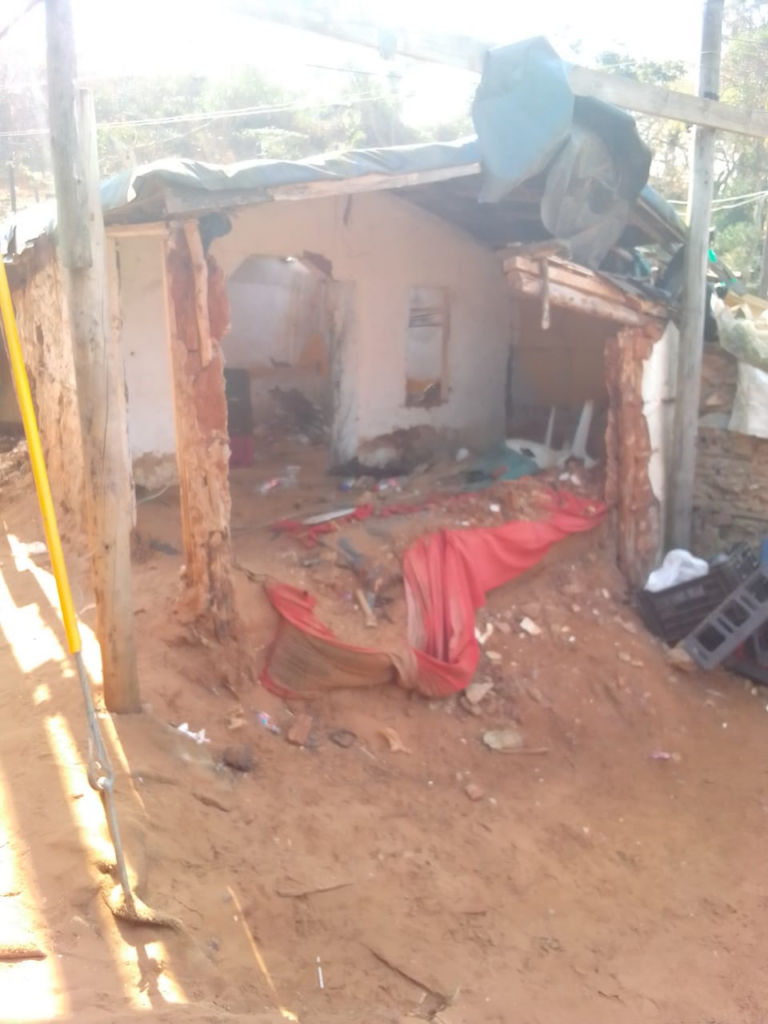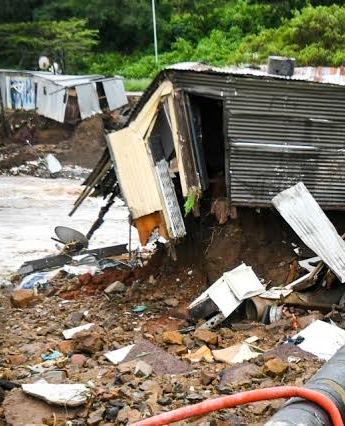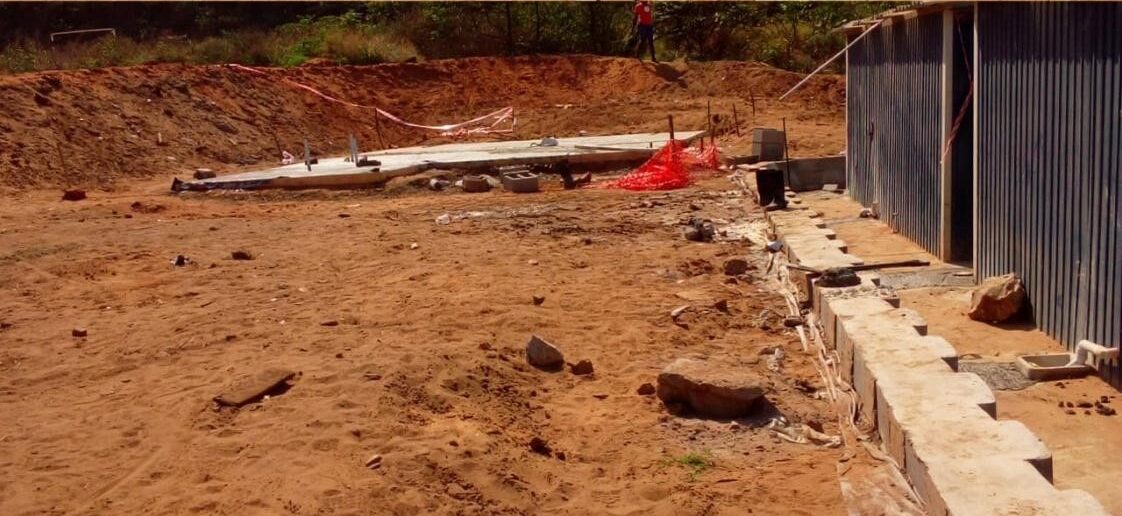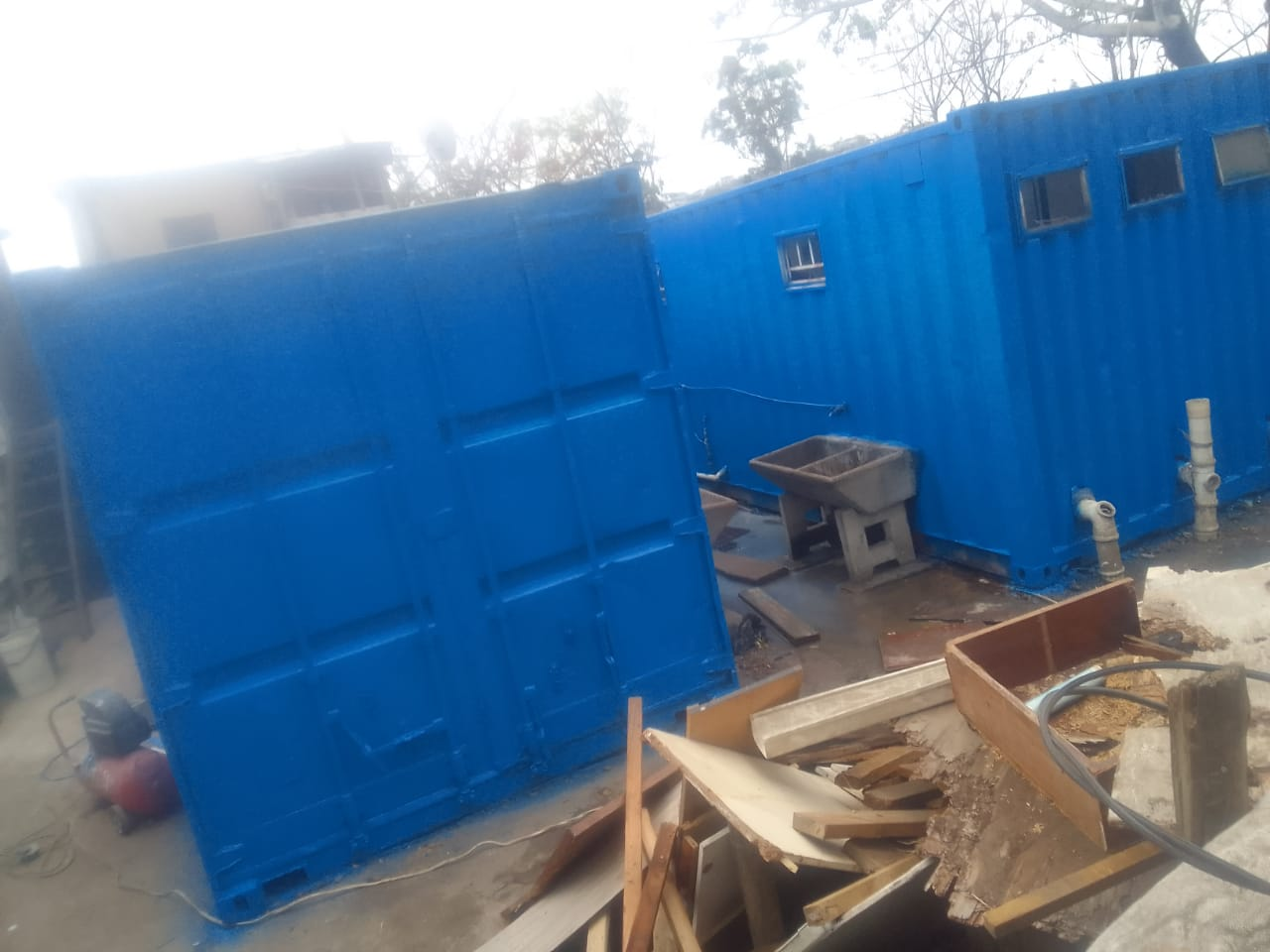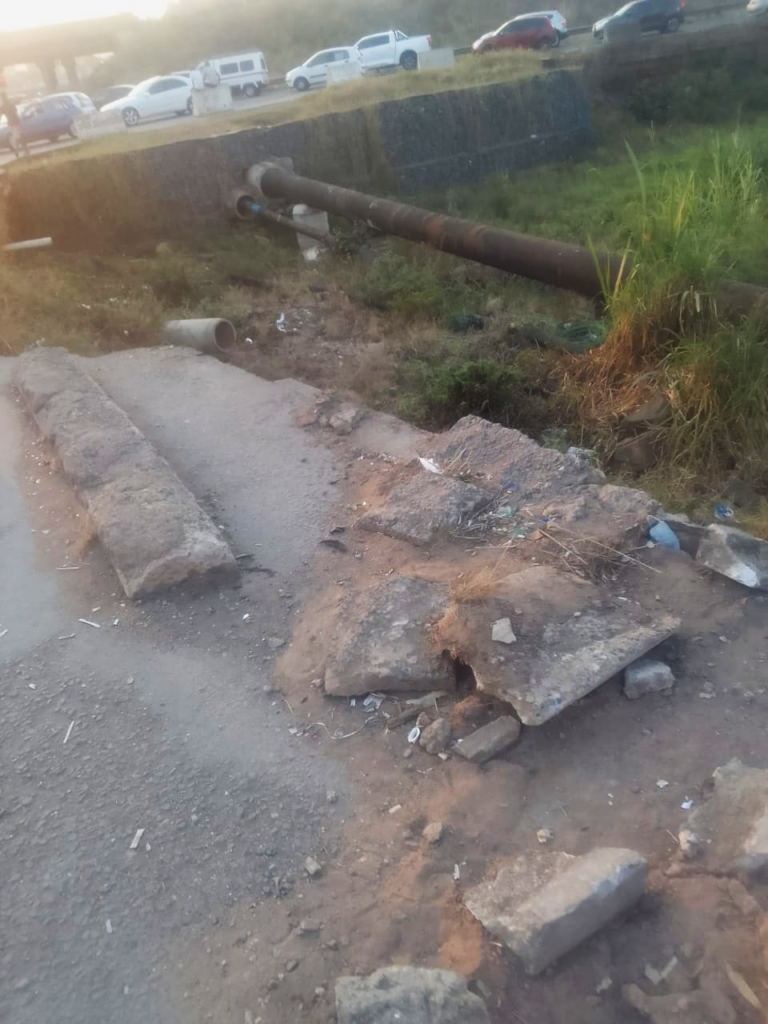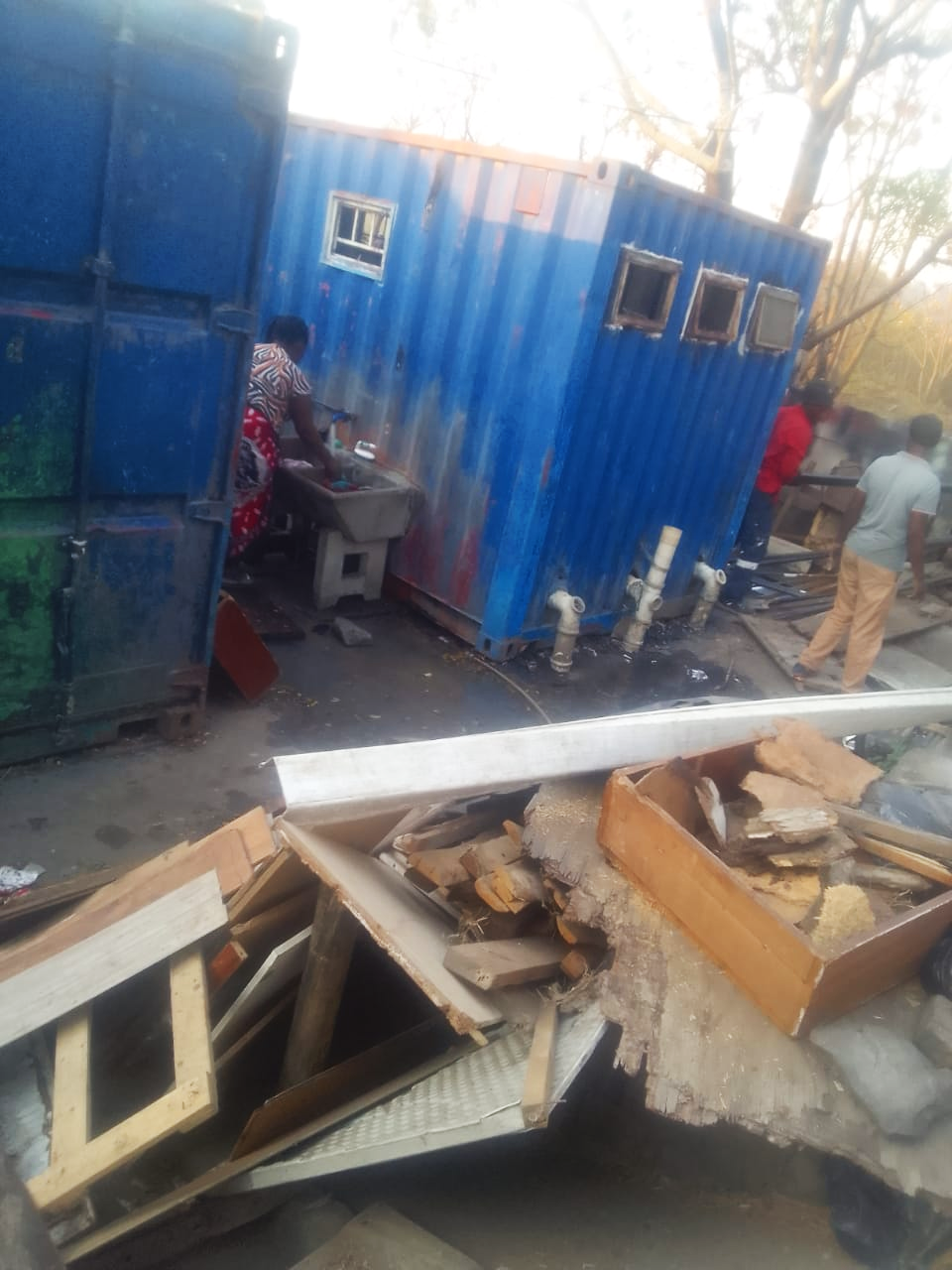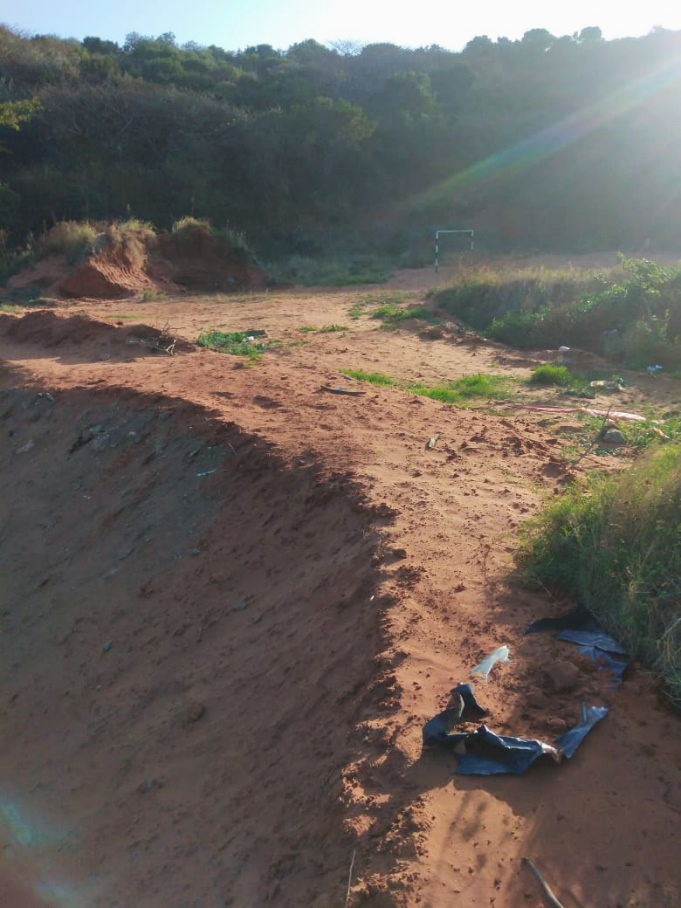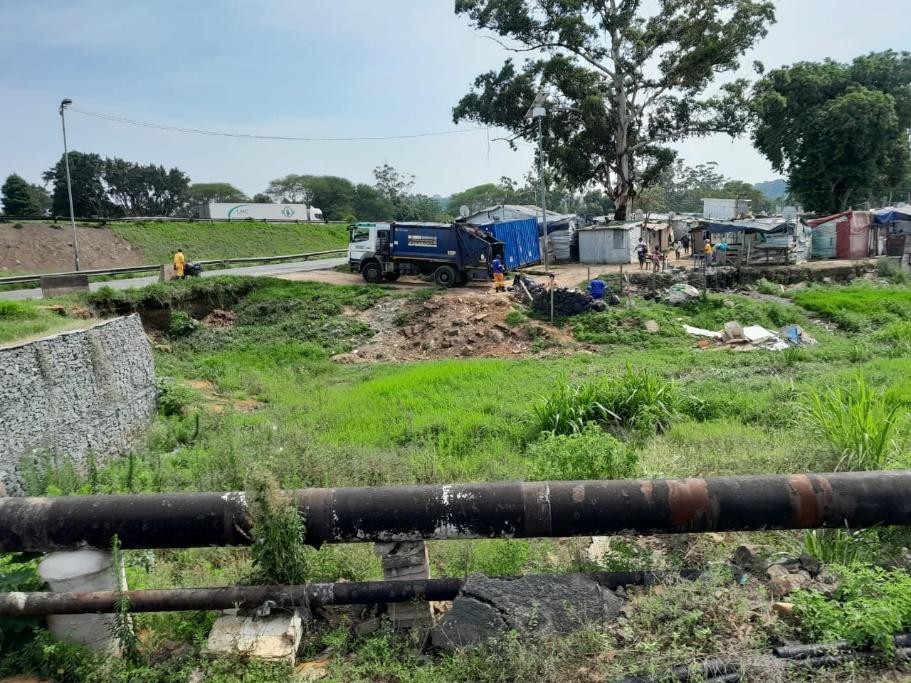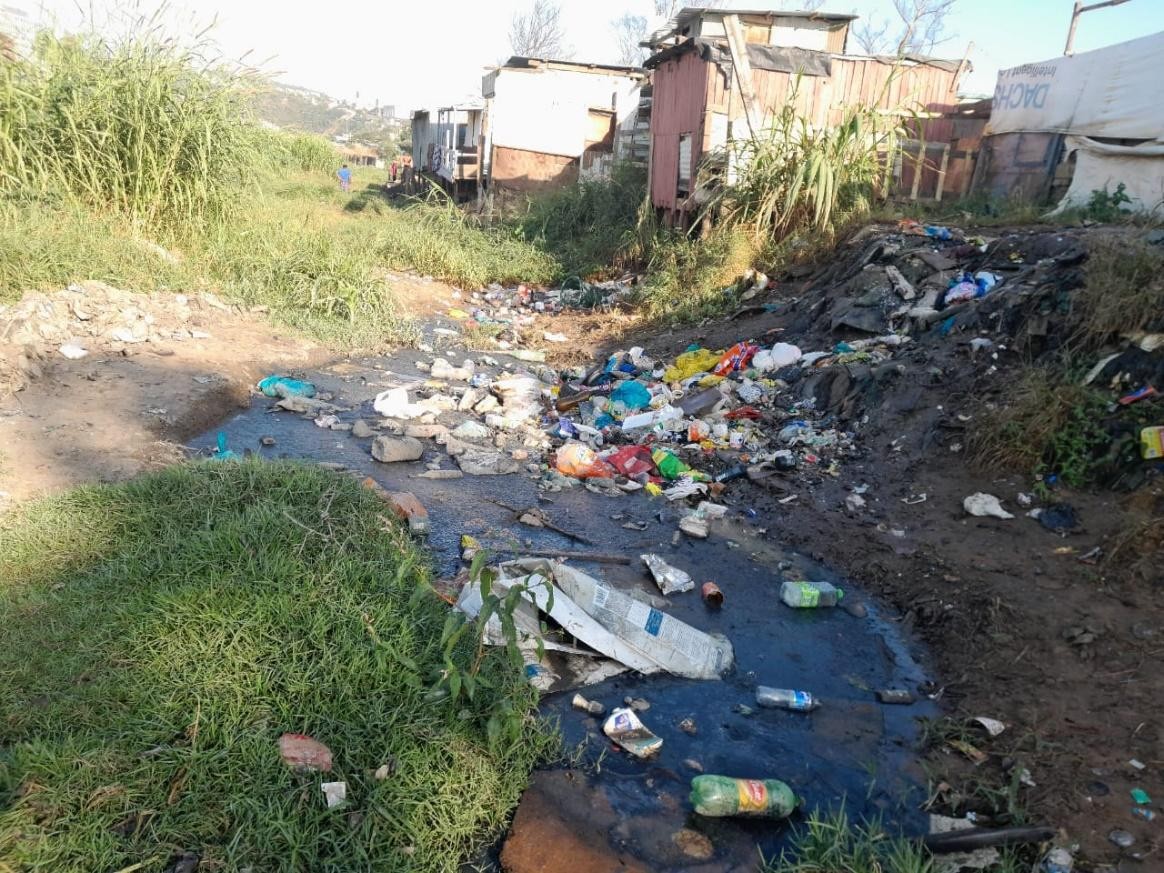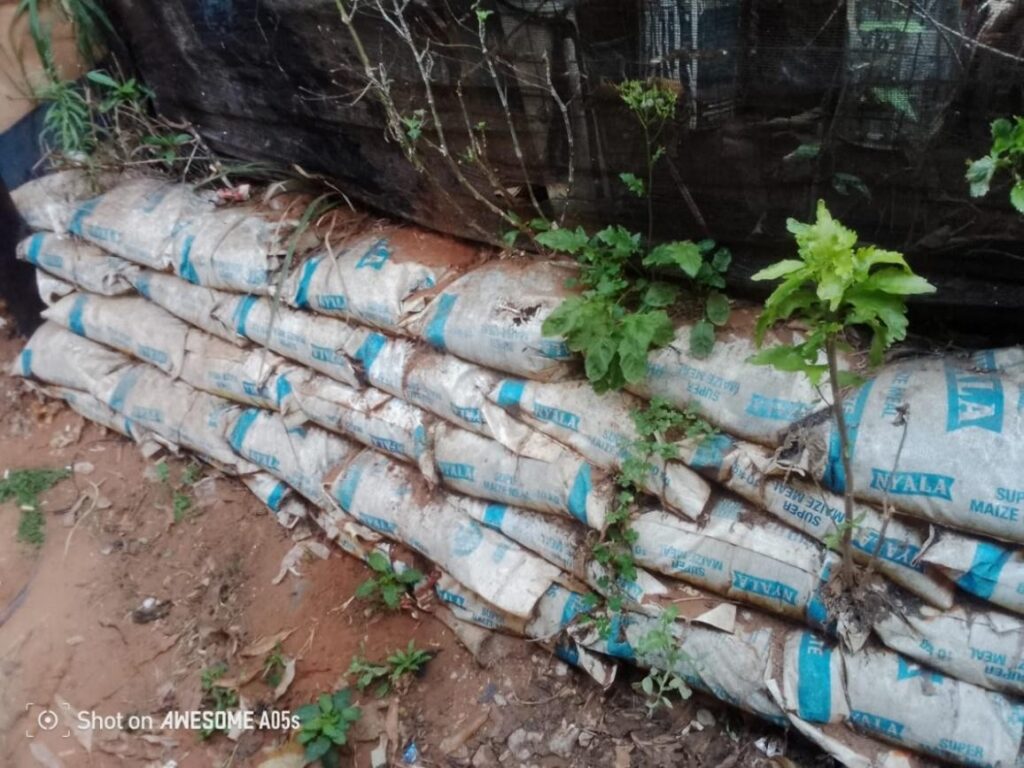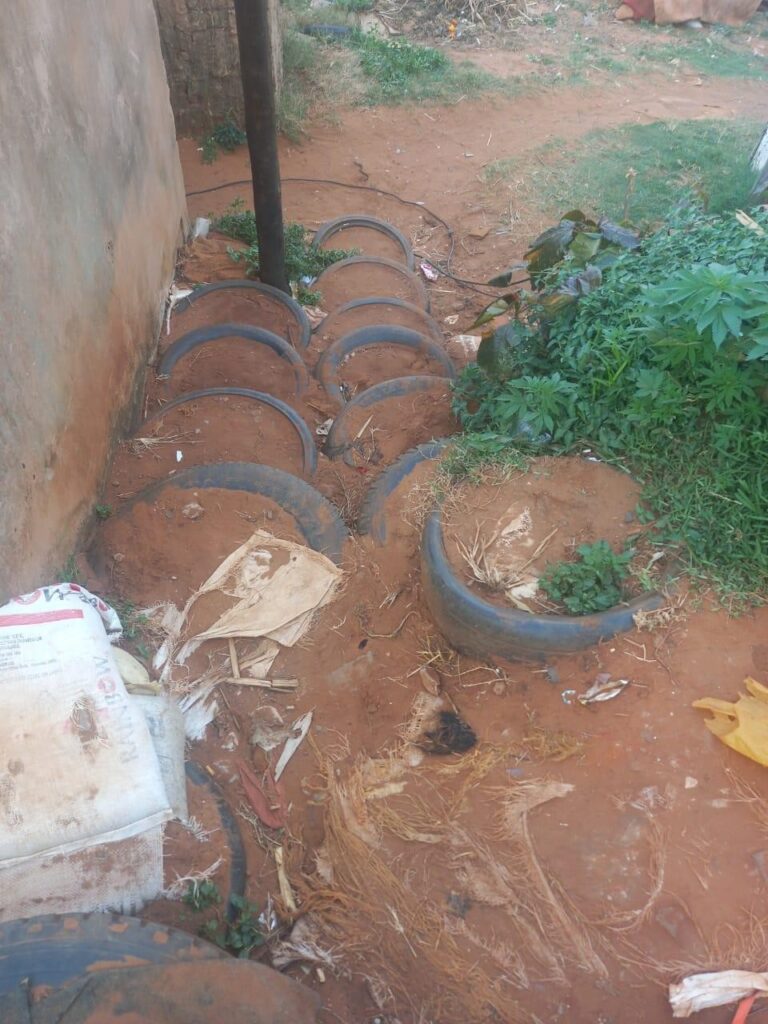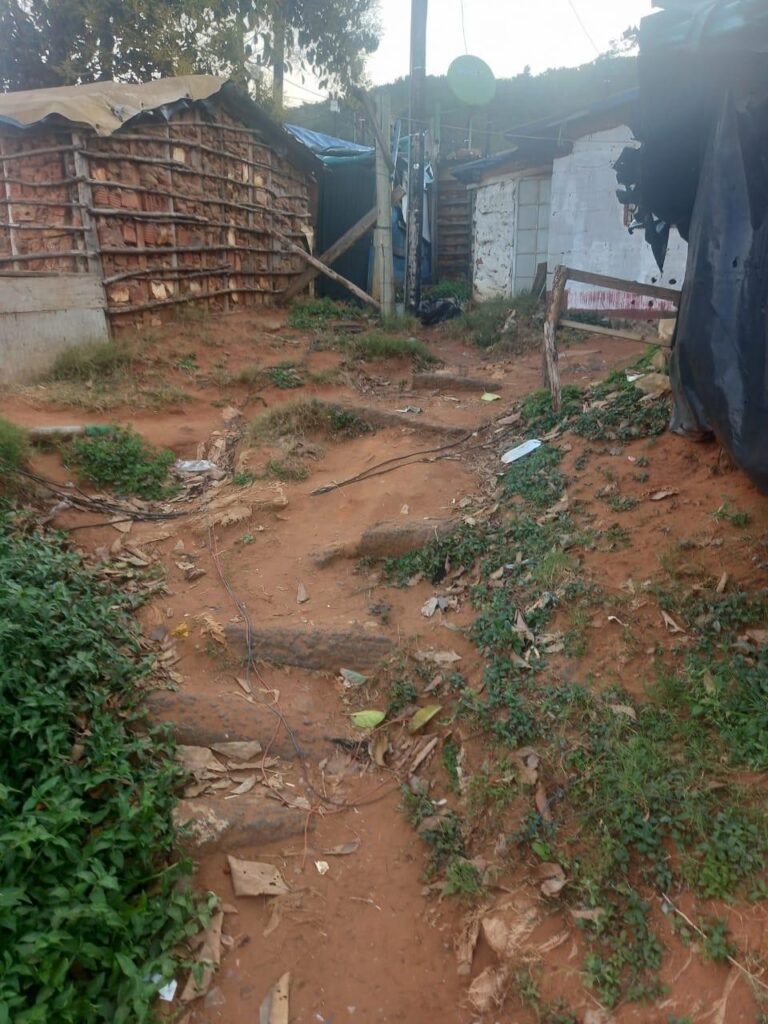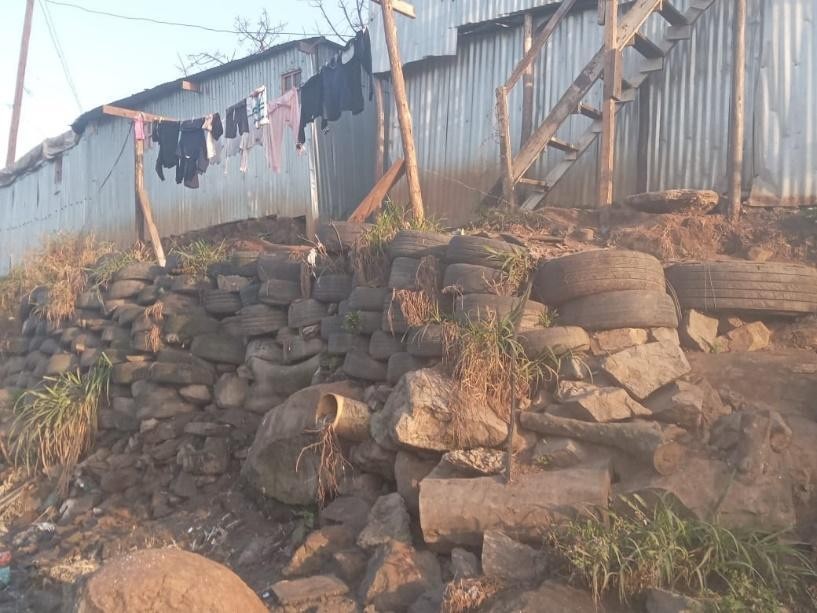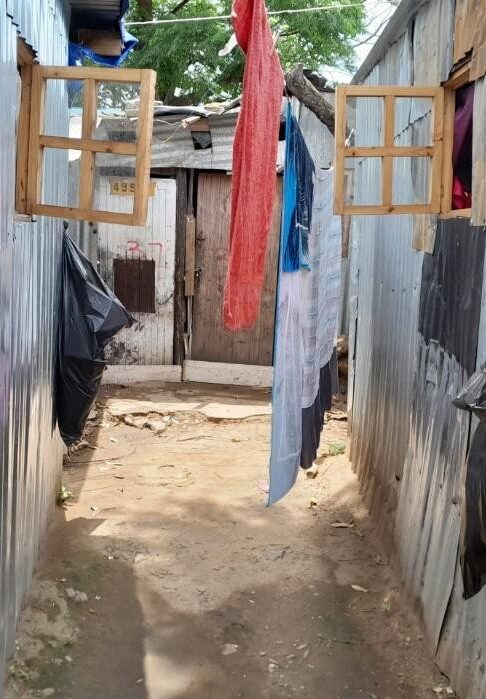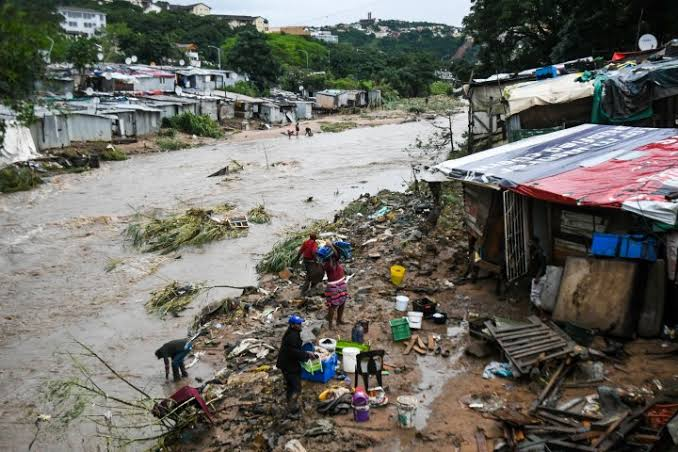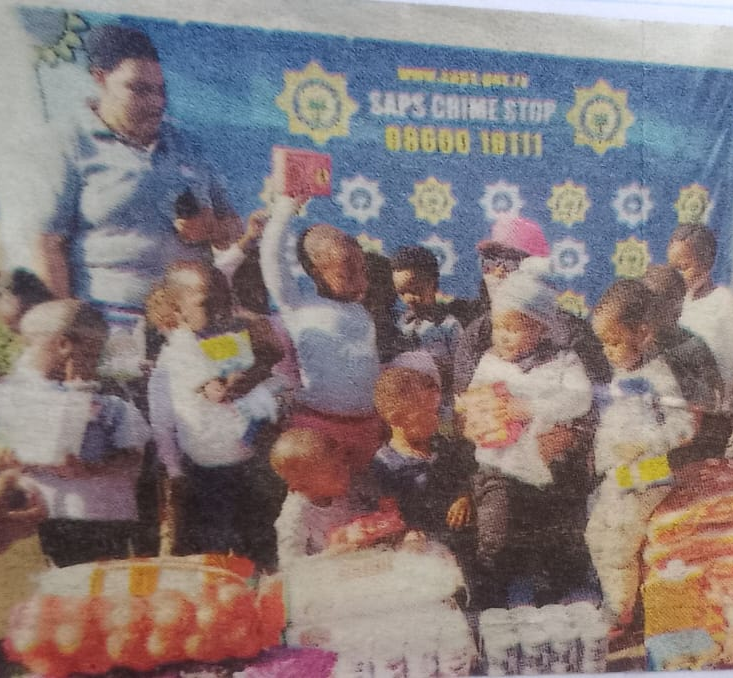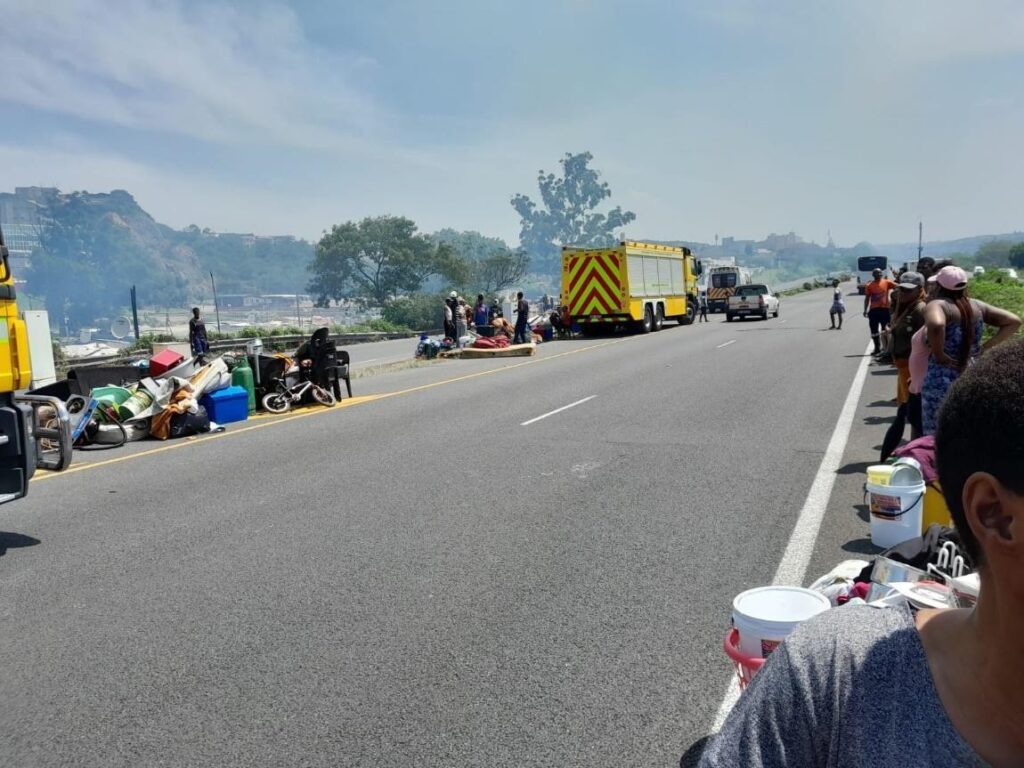25 June 2025
Through our eyes: Community-led innovation in building resilience after the Durban floods

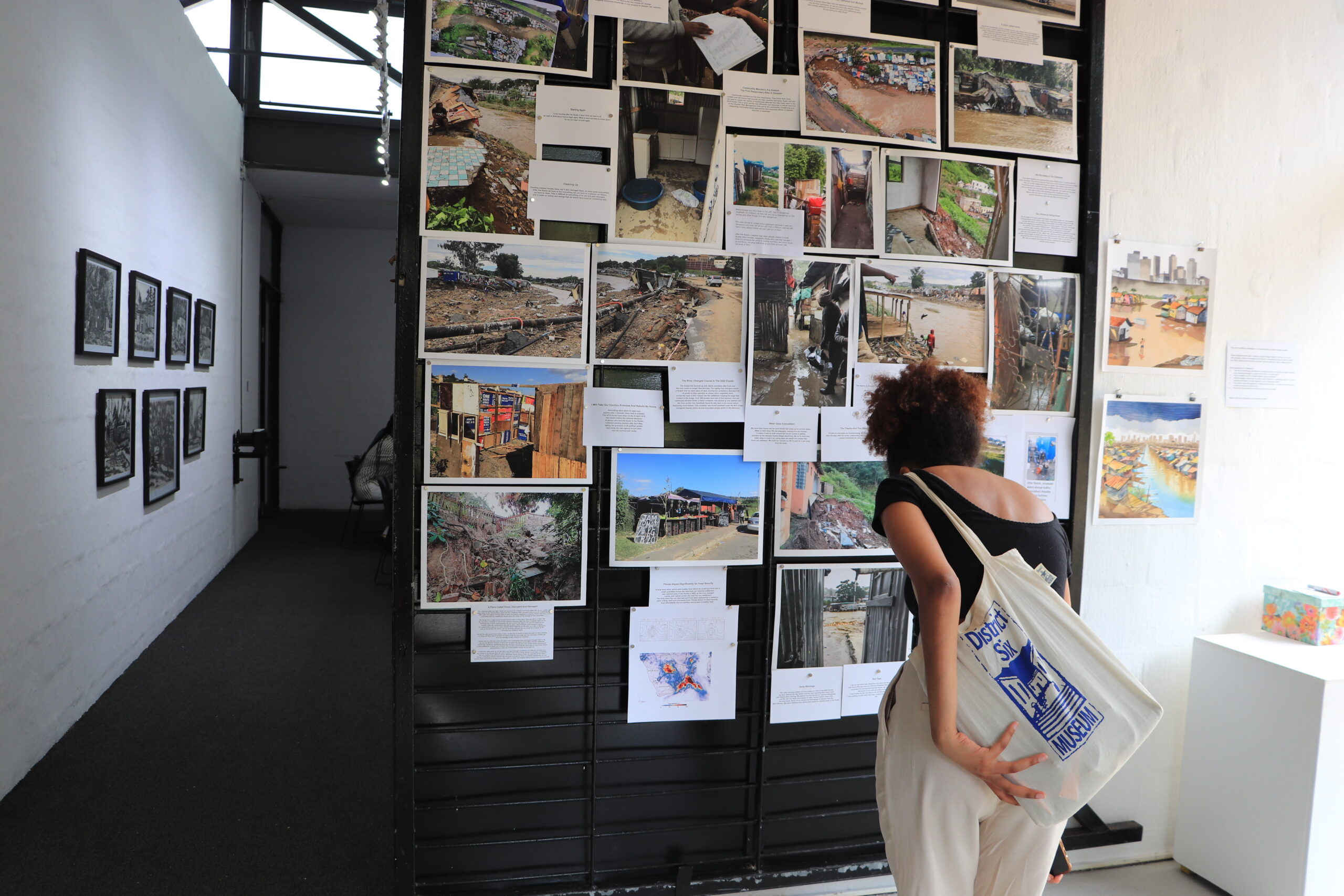

In recent years, the coastal city of Durban (governed by eThekwini Municipality) in South Africa has been impacted by more frequent and intense flooding events. Informal settlements, often located in flood-prone areas with inadequate infrastructure and drainage, are particularly vulnerable. When floods occur, they do not just damage structures; they displace families, disrupt livelihoods, and expose systemic inequalities. The consequences are far-reaching— eroding development gains, and placing immense strain on already overstretched local services and governance systems.
This photo story communicates the voices and perspectives of community members affected by an extreme flooding event in 2022 in Quarry Road West and Pholani Informal Settlements. Their reflections, shared through PhotoVoice methodology, were prompted by three questions which reveal the impacts of the floods, as well as their individual and collective responses to the disaster:
- How do rains and floods affect you?
- What have you and your community done to reduce the impact of the rain and floods?
- How and where has someone helped you to deal with the floods?
Through photos and accompanying narratives, informal settlement residents show not only the hardships they continue to endure—the loss of homes and identity documents, the destruction of essential services and infrastructure, the erasure of economic opportunities—but also the emotional toll: trauma, displacement, and a deep-seated struggle to rebuild.
Yet, within these challenges lies a powerful narrative of strength, adaptation, and community-driven recovery. This photo story aims to capture these personal experiences and stories—of resilience, survival, and recovery in the face of disaster.
Impact of the floods: housing, health, and community spaces under threat
When the skies opened over Durban between 11 and 13 April 2022, the rains fell heavily and relentlessly. The floods were among the most devastating in eThekwini’s history, resulting in the death of 461 people, over 40,000 people being displaced, and over 4,000 houses destroyed, with many in peri-urban and informal areas losing their houses, as well as their land. For the residents of Quarry Road West and Pholani informal settlements, the floods brought devastation that impacted every aspect of daily life and undermined livelihoods.
As shown in the community members’ photos and narratives below, informal homes, often built from fragile materials and located on steep slopes or close to overflowing rivers, stood little chance against the heavy rains and flooding waters. Whole structures collapsed, leaving families exposed to the elements, forcing them to seek shelter in overcrowded community halls, schools, or with relatives. Precious belongings and important documents were swept away within hours. The loss of homes was more than a physical displacement— for many it was also a loss of safety, identity, and dignity:
“The rains and floods caused a lot of damage to the people of Pholani because Pholani is a high place, people ended up losing their homes. It also happened that potholes were formed, destroying people’s roads. The toilets also ended up being destroyed because the earth got inside.”
– Community member from Pholani
As highlighted by residents of Quarry Road West, sanitation infrastructure, already limited, was either damaged or completely destroyed, contaminating water sources and creating a fertile ground for disease outbreaks. The collapse of toilets and drainage systems meant that residents faced not only the immediate health risks of waterborne diseases, but also the indignity of struggling to maintain basic hygiene in the midst of the flooding disaster.
“Here in this picture the flush toilet has been damaged by the floods, the community were facing challenges because the pit latrine toilet was covered by the sand as well. The community was left without any toilet and people were forced to use the field or open spaces.”
– Community member from Pholani
Community spaces such as the football field described below in Pholani Informal Settlement, which offered young people hope and an escape from the daily pressures of informal settlement life, were also devastated by the flooding. What were meant to be spaces of safety and recreation were destroyed by the floods, undermining much of the community’s efforts to create positive alternatives for its young people.
“This picture shows the time of construction of the sports ground for soccer for the youth. The reason for this was trying to keep the youth of this community busy so that they are not involved in drugs and alcohol. During the floods all that sand from the sports ground flooded toward the toilets. The sport ground was not finished at that time and washed away, so now we do not have the sports ground for the youth.”
– Community member from Pholani
These physical losses had profound emotional and mental impacts, which continue to affect communities today. The trauma of sudden displacement, of watching one’s home and community infrastructure be destroyed, left many struggling with anxiety, depression, and hopelessness. Parents worried about how to keep their children safe and healthy; young people mourned the loss of their safe spaces and the sense of normalcy they had worked so hard to build. Beyond merely observing these impacts, through INACCT’s PhotoVoice and other participatory engagements these have been documented and captured, and shared with diverse audiences. Many participants expressed that this was the first time their stories had been formally acknowledged—an important step toward healing and justice.
“We lost our houses including the land. It altered the landscape which led to very small spaces. Because of the change of landscape no one could retrieve the houses and we had to start afresh. Losing everything disturbs your mind not knowing where to start. Your health deteriorates, you are traumatised, angry and confused. This whole situation affects children as well. It shattered our independency and took away our rights to land. We started to depend on the Municipality to make decisions for us and about us. Floods stole our freedom and we are now living in someone else’s roofs abide by their rules of renting. Floods took away our dignity and be treated like we do not belong into the community because we are not owning a house. Sometimes there will be meetings in the community and you are scared to speak out.”
– Community member from Quarry Road West
As is illustrated by these photos and narratives, the floods in Quarry Road West and Pholani were not a one-off event. They triggered other crises that compounded existing vulnerabilities, negatively affecting the daily lives and wellbeing of all residents for an extended period beyond the immediate aftermath of the flood.
Holding the ground: community-led responses and everyday resilience
Despite the destruction left by the 2022 floods, residents of Quarry Road West and Pholani informal settlements have begun to adapt and rebuild—transforming hardship into community-driven resilience. While the scale of the damage was overwhelming, local residents refused to be passive victims of disaster. Instead, they turned to resourceful, often improvised methods to reduce the risk of further flooding and to stabilise their living environment.
In Pholani, where the soil is soft and prone to erosion, residents used sandbags, rubble, and stones to prevent the ground from washing away:
“We work together as a community and we have decided to use the sand bag strategy to close or fix the open places after the floods. We tried to prevent water from moving with the sand bags, although this strategy is not 100% safe but it makes a difference. This is a wall of sand bags stopping the soil from moving with houses. Some houses have been built in bad locations and sand bags can’t protect the house.”
– Community member from Pholani
“The thing we have done at Pholani is to use the waste, stones and sand to fix the hole or trenches opened by the floods. We put mats because land is steep. We have put carpet /mats in the pathways and behind the houses. This picture shows the strategy for preventing movement of soil using bags and tyres.”
– Community member from Pholani
Additionally, the use of mats, carpets, and even old clothes have been implemented as common strategies to reinforce unstable ground and create walkable paths. These locally devised methods allow residents to reduce soil movement and minimise the erosion of pathways and yards—practical interventions to make daily life safer for all community members in the midst and aftermath of the flood.
Along the riverbanks in Quarry Road, residents also stacked sandbags and old car tyres to shield homes from rising water levels. These barriers helped to slow down the floodwaters, although, as residents noted, when the river swelled beyond its usual levels, the water still entered their homes and yards.
“As Quarry Road residents we have come up with a plan of putting tyres next to our houses near the river to protect our houses from being flooded. If you loose a house, you do not just lose a house but you also lose your confidence as well. Once the house is flooded, you will never build a house in that spot.”
-Community member from Quarry Road West
In some cases, the floods also triggered more permanent shifts in building practices, with residents transitioning from mud homes and tarpaulin roofs to brick structures with tin roofing, taking steps to strengthen their homes against future disasters. Some community members carefully measured land plots before rebuilding, ensuring safer placement on more stable ground wherever possible. As explained by a community member from Pholani,
“Some ended up demolishing the mud houses and building brick ones with tin roofs and removing the tarpaulins and papers before they built. Some were carefully measuring the area they were going to build on. What we did as a community was to put soil in sacks so that we would support our soil so that it would not erode.”
Beyond these physical adaptations, residents also took action to address the environmental and health risks caused by the flooding. In Quarry Road, a community-led waste management programme was launched in partnership with local stakeholders and the municipality. The initiative began with clean-up campaigns that helped remove debris and waste scattered by the floods. With support from NGOs and the municipality, mini and large waste containment areas were established, and skips were provided to manage household waste.
“We managed to minimise floods impacts by minimising on how to dispose waste by working with our stakeholders in partnership with the Municipality who have waste collectors who collect waste from the informal settlement as we all know that after the floods waste was all over the settlement.“
– Community member from Quarry Road West
Through these efforts, residents of Quarry Road West and Pholani demonstrated remarkable resilience and agency. Documented through PhotoVoice, the low-cost and community-led innovations are supported by research and municipal partnerships, thus illustrating the potential for scalable and locally devised resilience solutions. By working collaboratively, they can be incorporated into, and supported by, municipal plans and policies—a core aim of the INACCT project. These community-driven innovations are not only about survival; they are about reclaiming a sense of control and dignity in the face of recurring climate disasters.
Support in times of crisis: Collective responses and social solidarity
The impact of a disaster event, in the short-, medium- and long-term, depends not only on infrastructure and emergency services, but on the strength of relationships between neighbours, community leaders, civil society, and local institutions. After the 2022 floods, it was this social fabric that held much of Quarry Road West and Pholani together, with acts of care – however big or small – strengthening a broader network of support.
In the immediate aftermath of the floods, community members were often the first responders. Neighbours shared what they had—blankets, food, clothes, and sleeping space. Some offered shelter in their homes, while others provided first aid or gathered materials like logs, nails, and shutters to help rebuild damaged structures: “The community were united during the floods as they provided help to each other with clothes, blankets, cooked food. Some of the community members provided help with cutting the strong wood in the forest to fix the flooded houses, and some came with the corrugated iron. The municipality came with building material and blankets.” These spontaneous, local efforts created a safety net where official aid was delayed or stretched thin.
Faith-based spaces were used as relocation sites, offering shelter to those who had nowhere else to go. A local church opened its doors to those displaced, with some individuals having to stay for several months. This space became a hub not only for rest and recovery but also for services.
“This is the church that helped our community during those trying time (izikhathi ezinzima). We stayed here for a number of months. Home Affairs and our Municipality visited here to come an give us some counselling. They were asked by UKZN to come and help us. To move some members of the community to stay there. They are still staying there.”
-Community member from Quarry Road West
Support also came from civil society organisations, who provided supplies and food or offered support with flood management and recovery activities. For example, through a municipal funded project, Project Preparation Trust (PPT) partnered with the community to remove blocked waste drains and provide short-term employment. The jobs created under the community-driven solid waste collection system helped residents not only improve conditions in their settlements but also rebuild their lives with dignity. This type of collaborative action illustrates the type of multi-level governance INACCT seeks to strengthen through its research-to-action approach.
The communal efforts outlined here, though varied in scale and duration, underscore a deep sense of social capital that exists within and around these informal settlement communities. It is a form of resilience built not just from physical adaptation, but from relationships—where communities mobilise their own strengths and link with others in moments of need.
eThekwini Municipality also played a critical role in coordinating emergency shelter and relief distribution. Displaced residents were first accommodated in community halls, where they received food, clothing, and temporary assistance. Later, some were relocated to areas like Frazer, where they continue to await more permanent housing solutions.
“The Municipality was able to participate by taking all those whose houses were damaged by the floods and keeping them in the Community Hall while it tried to find them accommodation. It also provided food to the affected people and later removed them from the Community Hall because it had to be reused. It found them shelter in one of the areas called Fraizer, where they are still waiting, as it had promised them that they would stay temporarily until they were found a place and built them houses of their own, where they are still waiting.”
“We were helped by the staff who gave us vouchers and also made free passes for us. They supported us with food and provided us with food, bags and clothes. They put us to sleep in the community hall They also gave us clothes to wear. We were treated with respect by the police.”
-Community member from Pholani
There have also been significant government interventions to support medium- to long-term infrastructural recovery measures, addressing the factors which have clearly exacerbated the vulnerability of residents during and after the floods.
Emergency services such as firefighters also played a vital role in the immediate aftermath of flooding—distributing clean water and ensuring basic safety.
The process of rebuilding is ongoing with housing and long-term infrastructure development and maintenance remaining key challenges. But what the residents of Quarry Road West and Pholani continue to demonstrate is that collective care, solidarity, and trust are foundational to enduring and recovering from climate-related disasters.
A significant differentiating factor between the two settlements in terms of support received during and after flooding is that Quarry Road residents are part of the life saving Community Based Forecast Early Warning System (CBFEWS), whereas the equivalent system is not in place in Pholani. This was discussed in depth during Learning Lab engagements where community members presented and discussed their PhotoVoice activities. The CBFEWS has a proven track record of helping to reduce flood impacts and loss of life since its establishment in 2016. CBFEWS offers a replicable model which should be urgently upscaled to other informal settlements as such systems are a foundational part of preparing the city for future flood events.
Strengthening collective resilience: PhotoVoice as a tool for empowerment and policy influence
As this collaborative initiative under the INACCT Resilience project has shown, PhotoVoice transcends mere documentation of flood impacts. It facilitates impactful knowledge-to-action pathways, acting as a catalyst for community empowerment, participatory action, and policy advocacy. By involving residents of Quarry Road West and Pholani as co-researchers, we have fostered a profound sense of agency and collaboration.
PhotoVoice is a medium for residents to articulate their experiences, challenges, and coping mechanisms in the aftermath of the 2022 floods. Its participatory approach encourages diverse stakeholders to engage with unique and individual stories as well as collective resilience strategies, strengthening social ties crucial for communal recovery.
By showcasing the photos at an exhibition which formed part of a Learning Laboratory session – another key feature of the INACCT project – community members’ voices were further amplified. The exhibition brought together community members, municipal officials, and researchers to encourage meaningful engagement and co-learning. This format, in and of itself, exemplifies participatory urban governance, serving as a prototype for more inclusive and equitable modes of engagement that centre the voices of those who have historically been marginalised in resilience planning . The exhibition created an environment where all participants could contribute meaningfully through creative expression.
Through processes of engagement between community members, local government officials and other stakeholders, the PhotoVoice initiative also has considerable potential for policy influence. The visual narratives and testimonies showcased at the exhibition presented policymakers with firsthand insights into the lived realities of informal settlement residents. The stories were able to ground the urgency of disaster preparedness and inclusive urban planning in the actual needs and experiences of informal settlement communities. Therefore, by directly involving residents in the dialogue, the project promoted transparency and accountability, encouraging policymakers to consider community-driven solutions in their decision-making processes.
The flow of knowledge was two-directional during the Learning Lab with stakeholders engaged in significant co-learning: Government officials expressed the value of engaging with informal settlements to be able to ‘ground truth’ their desktop work through the PhotoVoice exhibition and understand the challenges to which municipal planning needs to respond. Officials validated the approaches adopted by informal settlement residents to reduce flood risk. Specifically, the use of carpets to slow water down and reduce soil erosion, was seen by one of the municipality’s engineers to be an excellent alternative to other approaches. This dual knowledge flow was powerful in laying the foundations for stronger and more equitable relationships between key actors.
The importance of gender-responsive and inclusive approaches to resilience building in informal settlements has also been clearly illustrated. Women and youth, often at the frontlines of disaster response in these communities, used PhotoVoice to highlight the disproportionate burdens they carry, and the essential leadership roles they play in building back better.
The lived experiences of residents clearly illustrates how climate-related disasters intersect with and deepen existing social inequalities. Using the PhotoVoice methodology helps to amplify voices of residents—particularly women and youth—who are often excluded from formal resilience planning, further highlighting the centrality of GESI considerations in disaster preparedness and urban resilience strategies.
In short, three core resilience building elements of PhotoVoice in action are:
- Empowerment: Residents gained the tools and confidence to share their stories, enabling them to actively engage as agents of change.
- Participatory action: The collaborative process fostered a sense of ownership and collective responsibility, encouraging communities to engage in resilience-building activities.
- Advocacy: By presenting their experiences to policymakers and stakeholders, informal settlement residents directly influenced discussions on disaster risk reduction and urban development.
- Empowerment: Residents gained the tools and confidence to share their stories, enabling them to actively engage as agents of change.
This PhotoVoice initiative exemplifies how participatory methodologies can bridge the gap between communities and policymakers, ensuring that resilience strategies are both inclusive and effective. As climate-related challenges intensify, such approaches will be increasingly vital in crafting responsive and equitable solutions.
The INACCT Resilience project shows that when residents are engaged as knowledge holders and decision-makers, more adaptive and effective resilience strategies emerge. The integration of participatory research methods, locally driven innovations, and municipal engagement has created a replicable model for community-led urban resilience in African coastal cities. These lessons inform not only local interventions in Durban and Beira, but also broader dialogues on equitable adaptation planning across Africa.
This photo story is based on research undertaken for the Designing Inclusive African Coastal City Resilience Project (INACCT Resilience), which is an action orientated research project led by ICLEI Africa in collaboration with University of KwaZulu Natal (UKZN), Eduardo Mondlane University (Mozambique), eThekwini Municipality and Beira Municipality (funded by the CLARE initiative). INACCT Resilience focuses on strengthening urban coastal resilience, specifically in informal settlements, by working with communities to help ensure their insights contribute to shaping urban resilience policy and practice. Innovative engagement methodologies—such as photovoice—support this collaboration, enabling meaningful co-production with informal settlement residents, government institutions, and other stakeholders. Through inclusive processes, the project aims to support all stakeholders, including decision-makers, to strengthen informed, gender-responsive, and inclusive interventions for a more climate resilient future. The project’s two case study cities are eThekwini Municipality (Durban) and Beira in Mozambique. Both cities have recently experienced extreme flooding that caused severe urban and environmental damage, displacement and loss of life.
Photovoice is a qualitative approach used within participatory research, and involves collecting photographs taken by participants alongside their own stories and lived experiences written in narrative form. This provides rich insight into the realities of the individuals who have been most affected by climate-related disasters in eThekwini and Beira. By using photovoice, INACCT transcends language barriers and fosters inclusivity – a theme that is central to this project. The accessible nature of this methodology strengthens communication between decision-makers and communities who are often excluded from formal planning processes. It also encourages relationships to be built among researchers and communities via deliberation and sharing. Through combining visual storytelling with personal narratives, photovoice helps to communicate resilience building stories and bridge the gap between lived experiences and broader societal discussions and processes, ultimately contributing to supporting more effective resilience strategies.
Please cite this article as follows:
ICLEI Africa and University of KwaZulu Natal. 2025. Photostory: Through our eyes: Community-led innovation in building resilience after the Durban floods. Cape Town, South Africa: ICLEI Africa, Available online: https://africa.iclei.org/photovoice-durban/
This work was funded by UK aid from the UK government and by the International Development Research Centre, Ottawa, Canada as part of Climate Adaptation and Resilience (CLARE) research programme. The views expressed herein do not necessarily represent those of the UK government, IDRC or its Board of Governors.
All photos and stories featured in this article have been shared with the informed consent of the community members who participated in the INACCT Photovoice process and should not be used without permission. Most of the stories were translated from isiZulu to English. This PhotoVoice exercise was led by ICLEI Africa and UKZN in collaboration with the community members from Quarry Road West and Pholani informal settlements.
All rights reserved ©2025


